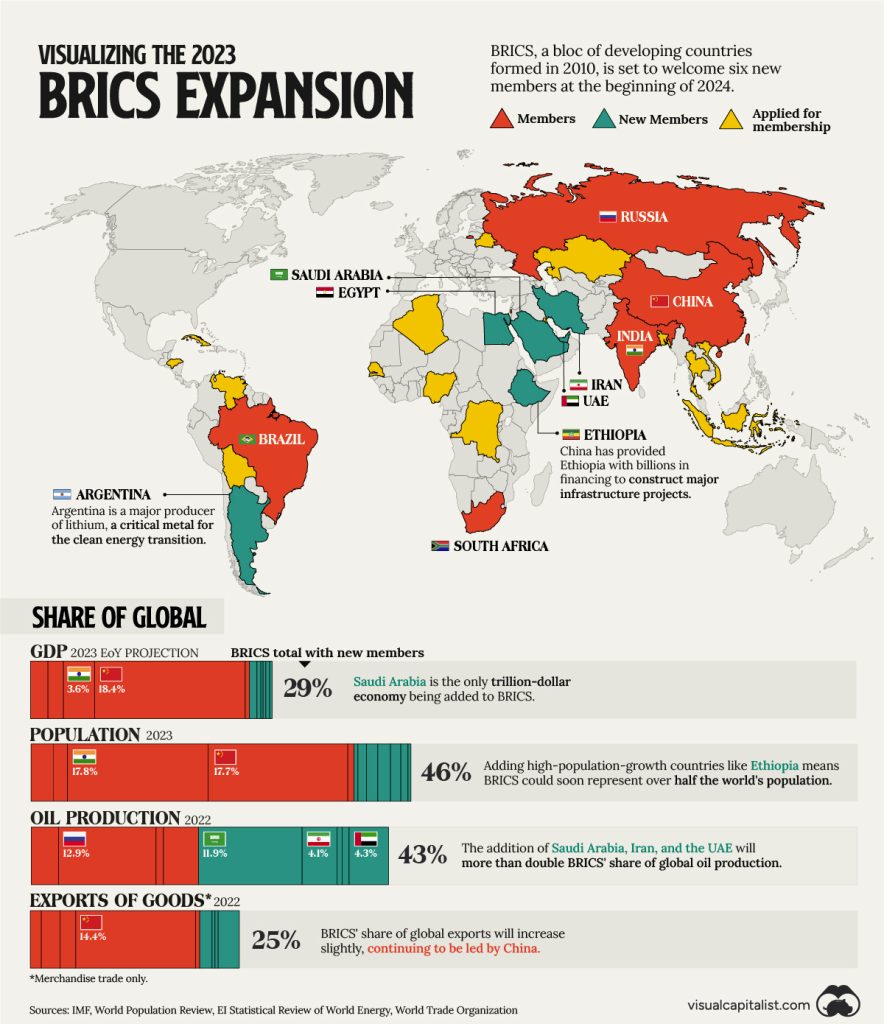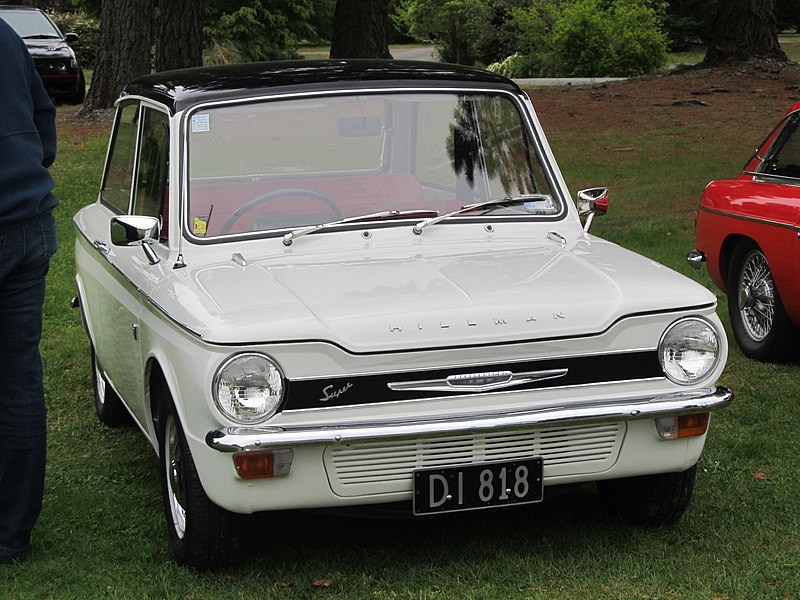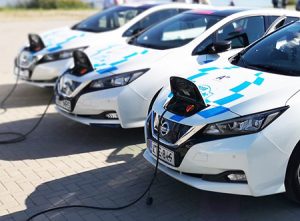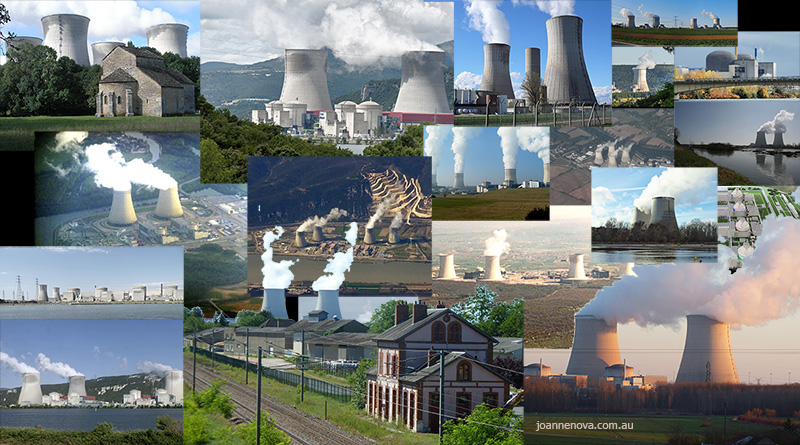|
|
||||
|
By Jo Nova Suddenly a lot of people in London are realizing what “Net Zero” really meansThis week many Londoners are waking up to the impact of living in an Ultra Low Emission Zone as the £12.50 daily charge for unfashionable cars begins in the outer poorer suburbs. Normally “climate change” costs are secretly buried in bills, hidden in rising costs and blamed on “old unreliable coal plants”, inflation or foreign wars. Your electricity bill does not have a category for “subsidies for your neighbors solar panels”. But the immense pain of NetZero can’t be disguised. For a pensioner on £186 a week it could be as much as an £87 a week penalty for driving their car — or £4,500 a year. The Daily Mail is full of stories of livid and dismayed people who served in the Navy or worked fifty years, who can’t afford to look after older frail Aunts or shop in their usual stores now, or who will have to give up their cars. People are talking about the “end of Democracy”. The cameras are expected to bring in £2.5 million a day in ULEZ charges to City Hall. But shops inside the zone may also lose customers, and everyone, with and without cars will have to pay more for tradespeople and deliveries to cover the cost of their new car or Ulez fee. Protests have reached a new level of anger and hooded vigilantes in masks carry long gardening clippers, or spray cans and lazers to disable cameras that record number plates for Ulez. In one photo the whole metal camera pole has been sheared by an electric saw of some sort. There chaos. Interactive maps have sprung up to report where the cameras are, and help people “plan their trips”. The vigilante group called Blade Runners have vowed to remove or disable every ULEZ camera in London. Nearly nine out of ten cameras have been vandalized in South-east London. The Transport for London website was overwhelmed with searches from people wondering if their car was compliant and they would have to pay just to drive on the roads their taxes and fees built. Some people have bought old historic cars to get around the fee, but apparently a lot of people hadn’t thought much about what was coming. Sadiq Khan probably didn’t mention this in his election campaign. Presumably there are others in London who will get a nasty surprise bill in the mail. As Nigel Farage says: “I’ve never seen people so angry about this new tax on working people. “And people are not just furious at Sadiq Khan, the Mayor of London, they’re angry at the Prime Minister and the conservatives for not stopping the scheme. Politicians all over the West should be watching LondonThe shock win 6 weeks ago of an anti-Ulez candidate in Boris Johnson’s old seat rattled both sides of politics to the point where even Sir Keir Starmer the Labor Opposition leader has been pressuring Sadiq Khan to slow down. The Labor Party appeared to suddenly recognize that their green flank was exposed and vulnerable to any conservatives who spoke up for car owners, which, of course, might win them millions of votes. The only way the unpopular green policies win elections is when the costs are hidden and the plans are described in vaporous motherware lines of clean air and fluffy koalas. But the Ulez fees are a full frontal attack on lifestyles, especially of the poor. With a first-past-the -post voting system in the UK both sides of politics are very vulnerable to splinter factions that break away on key topics and fracture their vote. The only way unpopular green schemes win elections is when both sides of “the Uniparty” have the same policy. People all over the West should be watching London, because if Sadiq Khan gets away with this, it will happen everywhere. Katie Hopkins is appalled that people are vandalizing cameras with filling foam from ToolStation for £6.69: One Tory MP — Sir Iain Duncan Smith has said he backs the “Blade Runners”. The former cabinet minister said today he was ‘happy’ for the residents of his Chingford and Woodford Green constituency to destroy cameras because they have been ‘lied to’. Vandalism is of course a bad thing. The worst vandals are the ones who run for elections without telling the voters they plan to take their cars, their jobs, their lifestyle and toss them in the Thames. Those vandals ransack whole democracies with deceit. It would be so much better wouldn’t it, if the PM held a referendum on Net Zero and let the people decide? h/t David Maddison, and Topher. I’ll be talking about this on The Aussie Wire with Topher. Keep reading → Vivek Ramaswamy worked in the pharmaceutical industry. Now that he’s free to speak, he distills the utter corruption of the FDA in under four minutes, it is beyond redemption, rotten to the core. “That’s’s why I favor a dramatic drastic gutting of the FDA…” — he says. Exactly… He’s a great speaker:
From his Twitter feed: “The corrupt FDA says you don’t have the right to even *try* medicines that haven’t been through 10+ years of testing, yet the government *mandated* Covid vaccines that sailed through FDA approval in less than 1 year. You can’t believe both things at once. Countless FDA regulations and actions are hypocritical, harmful & unconstitutional. I will rescind them accordingly, using the Supreme Court’s holding in West Virginia vs. EPA as my legal basis for doing so. For years I was coached by industry veterans not to speak out against FDA. It’s well known that if you anger FDA, they will punish you by blackballing review of your drug review applications. “FDA never forgets” is a quietly-whispered, well-known pharma industry adage. Well, they could only shut me up for so long. Now I speak freely as a citizen.” — @VivekGRamaswamy Meanwhile — circulating somewhere on the web, sent in by Charles: Scott Gottlieb (Pfizer) | James Smith | Stephen Hahn | Anthony Fauci
By Jo Nova Yet another reason EV’s are a lousy way to “save the world”The point of all the subsidies, the charging sites, the $3,000 parking fines, the extra generation, interrupted journeys, pot-holes, road-wear, tyre pollution, collapsing parking lots and random fires is supposedly so that we make the weather nicer by burning less fossil fuels. But in Norway where the biggest experiment in EV’s has produced an “idyllic” mass uptake of EV’s, the fuel use has hardly changed. Rystad Energy says that this shows we *must* electrify the buses, tractors and trucks too, but really this just shows what a waste of money all the past subsidies were. If the “low hanging fruit” subsidies didn’t achieve much, the next round of subsidies will have to waste stupendous amounts of money. Remember this doesn’t include fuel used to power the electricity cars, nor the fuel used to mine the lithium and build the EV, or to fill in the potholes and rebuild the bridges. No one even knows if EV’s will reduce carbon dioxide. “There’s no such thing as a zero emissions vehicle”. This is just “road fuel” we’re talking about and it’s not reducing it much: Is Norway’s Love For EVs Enough To Put A Dent In Fuel Demand?By Rystad Energy – Aug 28, 2023, 9:00 AM CDT, OilPrice.com Although EVs make up about 90% of all new car sales in Norway, fuel demand has only seen a 10% fall from 2017 to 2023, remaining relatively stable. Road fuel demand in Norway has remained relatively stable even with soaring electric vehicle (EV) adoption, raising questions about whether EVs really have a material impact on diesel and gasoline sales. Rystad Energy research and modeling has, however, uncovered the truth behind the persistent sales – electrifying heavy-duty vehicles, especially trucks, is essential to lowering overall fuel consumption. EVs are often positioned as the key to decarbonizing transportation, but the latest data from the Norwegian government suggests otherwise. Electric cars have accounted for at least 80% of all passenger vehicle sales for the past three years. EVs – including plug-in hybrid (PHEV) and battery electric vehicles (BEV) – accounted for about 90% of all new car sales in 2023. More than 50% of passenger cars on the road in Oslo are electric, a threshold that BEVs alone will pass 50% in the next two years. As far as experiments go, if anyone cared about CO2 emissions — the Norwegian EV program is a fail.
Since 2018, the average BEV in Norway has driven more miles than passenger cars of any other fuel type. In 2022, the average BEV drove 12,950 kilometers (km), surpassing for the first time the average distance of 12,000 km for diesel passenger vehicles. Overall, average passenger vehicle travel has steadily declined in Norway, from about 13,800 km in 2007 to 11,100 km in 2022. They looked at official fuel sales, annual average mileage and car sales as reported by Statistics Norway and estimate that passenger car fuel demand is down 20%, which is “in line with the BEV market penetration”, which it might be, but it’s still a big nothing in terms of stopping storms, floods and fires. No jet streams were altered by this experiment. Other factors confounding the experiment is that fuel demand from buses and trucks has grown from 30,000 barrels per day to 32,000. Plus the population grew, and people own slightly more cars per capita. (We all know EV’s are more likely to be the second car?) There are so many moving variables here — do governments that push EV’s onto the population also increase immigration thus undermining their own emissions reductions efforts? (Yes they do, and all the time). Are the populations that buy EV’s so wealthy they can afford the luxury of a second car? Does the increase in fuel prices (which was driven by green policies) mean more people catch buses and order online now, so instead of driving to the store, big diesel trucks now deliver their parcels? Rystad Energy have a very long explanation of why really the fuel savings from EV’s are “just around the corner” — like everything else in Transition-World. If politicians and activists actually cared about CO2, they wouldn’t be doing this. Image by Nerijus jakimavičius and Vogler
Written by Jo Nova Would you like PFAS with that?
Researchers analyzed 39 brands of straws in Belgium and found two thirds contained PFAS, and the paper straws were the worst. Fully 90% of all the paper straws contained some form of PFAS. 80% of Bamboo straws did too, as did 75% of plastic straws. Even 40% of glass straws contained PFAS. The only type of straws that were free of it were steel. The UK, Canadian, Belgium, New Zealand, and Australian governments banned plastic straws, as did some US States because “they were bad for the environment”. Paper drinking straws may be harmful and may not be better for the environment than plastic versionsScience Daily In the first analysis of its kind in Europe, and only the second in the world, Belgian researchers tested 39 brands of straws for the group of synthetic chemicals known as poly- and perfluoroalkyl substances (PFAS). PFAS were found in the majority of the straws tested and were most common in those made from paper and bamboo, the study, published in the peer-reviewed journal Food Additives and Contaminants, found. PFAS are used to make everyday products, from outdoor clothing to non-stick pans, resistant to water, heat and stains. They are, however, potentially harmful to people, wildlife and the environment. They break down very slowly over time and can persist over thousands of years in the environment, a property that has led to them being known as “forever chemicals.” They have been associated with a number of health problems, including lower response to vaccines, lower birth weight, thyroid disease, increased cholesterol levels, liver damage, kidney cancer and testicular cancer. Maybe accidental, maybe not… It isn’t known whether the PFAS were added to the straws by the manufacturers for waterproofing or whether were the result of contamination. Potential sources of contamination include the soil the plant-based materials were grown in and the water used in the manufacturing process. However, the presence of the chemicals in almost every brand of paper straw means it is likely that it was, in some cases, being used as a water-repellent coating, say the researchers. Calling these straws “paper”, 100% biodegradable and fully compostable seems like false advertising. H/t to Reader Image by rodgersm222 from Pixabay BRICS expand to nearly half the world’s population, ask for climate money, free tech and a free passAre we paying attention yet?The BRICS nations (in red, below) have just accepted six new members — Saudi Arabia, Egypt, Argentina, Iran, Ethiopia and the United Arab Emirates (green). The block now includes 46% of the population of Earth. They make 43% of the worlds oil, and about a quarter of the traded goods. The BRICS are going to abandon the US dollar and another 20 nations have expressed a desire to join. The India Narrative, called it “a new world order”. In other news, the BRICS groups said they’d quite like the West to keep giving them money and free climate technologies to save the world from climate change, (while the West battles the climate demons and hobbles its own economies). The BRICS promise they will absolutely, definitely, maybe get serious too in a few decades. While they’re busy burning record amounts of coal, they oppose any trade barriers done by the developed world in the name of climate change. We wouldn’t want things like pollution, child labor or slavery to get in the way of a good trade would we? When President Xi brags that they are the “global majority” it’s just a matter of time ’til he’s right:  The Visual Capitalist estimates the BRICS population is about 3.7 billion now. Give us your MoneyThe BRICS would like that $100 billion the West promised: BRICS countries on Thursday further urged developed countries to honor their commitments, including mobilizing 100 billion U.S. dollars per annum by 2020 and through 2025 to support climate action in developing countries. — CGTN The UN is “very important” because it helps BRICS nations get free things from the West, slows the developed world, and almost never demands anything in return. It is a one way siphon: New Delhi, August 24 (IANS): BRICS nations on Thursday re-emphasiseed on the importance of implementing the United Nations Framework Convention on Climate Change (UNFCCC) and its Paris Agreement and the principle of Common but Differentiated Responsibilities and Respective Capabilities (CBDR-RC) enhancing low-cost climate technology transfer, capacity building as well as mobilising affordable, adequate and timely delivered new additional financial resources for environmentally sustainable projects. “We recognise that the Means of Implementation should be enhanced by developed countries, including through adequate and timely flow of affordable climate finance, technical cooperation, capacity building and transfer of technology for climate actions. “Furthermore, there is a need for comprehensive financial arrangements to address loss and damage due to climate change, including operationalising the fund on loss and damage as agreed at the UNFCCC COP27 to benefit developing countries,” the declaration said. This is not exactly a pact of free speech and free marketsAs Alexandra Wexler noted in the WSJ, five of the six new members rank very low in the Freedom stakes. India and Brazil want to stay on good terms with The West and only a few days ago were calling for “clarity”, and it looked like the expansion might not go through. But the West’s gravitas has shrunk (with its carbon emissions) and evidently India decided the QUAD defense pact would survive any bad feelings arising from them approving, eww, Iran. (The QUAD being Japan, USA, Australia and India). Brazil and India had advocated for a more gradual expansion of Brics amid concerns that the group could become too far aligned against the West, morphing into an autocratic version of the Group of Seven major economies. It appears that Brics is headed in that direction, with just one of the six newly-admitted nations—Argentina—ranked as “free” in Freedom House’s widely used global freedom index, with a score of 85 out of 100. The other five countries are all designated “not free,” with scores ranging from eight to 21. Still, Brazil and India voiced their support for the expansion … Who knows — the block may struggle with internal tensions as Iran and Saudi Arabia are not exactly on the best of terms, and nor are Egypt and Ethiopia. China’s economy is said to be in trouble. South Africa is suffering long rolling blackouts, violence and corruption. India joined the Quad for fear of China’s aggression. Thanks to NetZeroWatch for links to key articles and OldOzzie.
 £9,500 for a 1970 Hillman Imp Super? | Photo by Riley from Christchurch, New Zealand Say hello to the new ideal car for your ultra low emission city, not an EV but a fifty year old HillmanMany Londoners are suddenly discovering how much they love old vintage cars, especially ones from the pre 1983 era, which just happen to be exempt from the £12.50 a day new carbon tax. The old cars are selling at a premium, and London may soon become the Old-Car-Mecca of the world. Who knows? This may not have been what Sadiq Khan was aiming for when he tried to force everyone to buy an EV or catch a bus. But it’s what happens when you bully people. The much hated Ultra Low Emission Zone (ULEZ) starts on August 29th and people driving petrol cars older than 2006 or diesel cars from before 2015 are likely to end up paying £12.50 every day just to drive in London. Vintage cars older than 40 years are exempt. h/t MrGrimNasty Londoners snap up classic cars to dodge ULEZEirian Jane Prosser, The Daily Mail Londoners are snapping up classic cars in a bid to dodge Sadiq Khan‘s ULEZ charge that will be expanded to cover all of the capital’s boroughs next week. Dealers across the capital have noted a surge in sales of cars manufactured before 1983, which are exempt from the £12.50 charge as they are classed as ‘historic vehicles’. Merlin McCormack, owner of Duke of London, a vintage car dealership in Brentford, said he had seen customers opting for more affordable classic cars to avoid the clean air levy. He branded the surge in sales ‘ironic’ as although the cars are exempt from the charge, the older cars are more polluting than its modern equivalent.  An Austin Mini for £20,000? | Photo of a Mini by Martin Pettitt from Bury St Edmunds, UK This includes a 1970 Hillman Imp Super for £9,500, a 1973 Alfa Romeo 2000 for £12,000, and a 1972 Austin Mini for £20,000. These older vehicles are also exempt from road tax, which Garry Short managing director of Classic Chrome in Mortlake, said most people are unaware of. Current Ads in London: Fifty three year old Morris Minor for £18,750 In other news this week, a member of Sadiq Khan’s staff has been accused of trying to pressure scientists to change their wording when their research showed his ULEZ policy in central London had cut nitrogen emissions by a mere 3% and achieved almost nothing on ozone and particulate matter too. In the emails, seen by The Telegraph, Ms Rodrigues said she was disappointed that Imperial College had published a study by the Department of Civil and Environmental Engineering that showed Ulez cut nitrogen dioxide by less than three per cent and had achieved an insignificant impact on ozone and particulate matter. Such research undermined the London Mayor’s policy, argued Ms Rodrigues. Such research undermines the Mayor’s policy, she said, as if science only existed to endorse the crazy totalitarian schemes politicians dream up. Her response also shows it’s not about pollution.
The current state of the Renewable Crash Test Dummy TransitionEveryone who can add up in Australia knows it can’t work, but the climate of fear stops them saying so. Last month a senior energy industry executive told the Australian Financial Review quietly that everyone believes [the 2030 target] will be missed, but nobody wants to say it. Apparently, even executives are being coerced into silence for fear of retribution. The insider referred to the “discretion” Ministers have on project approvals. It’s like a national mafia racket: “Nice business you have there — shame if you couldn’t get the permit”. So the Labor Party sets itself up to fail by silencing the people it could be listening to — as if the electricity will still be there when the turbines stop turning. To put the size of the moonshot in perspective, even Federal Climate Change and Energy Minister Chris Bowen himself said the nation must “install 22,000 500-watt solar panels every day for eight years along with 40 seven-megawatt wind turbines every month”. In toto, we are supposed to build 44GW of “renewables” by 2030. Instead of this frenetic pace, renewable energy investment ground to a near halt in the last quarter in Australia. What was a rolling $1.2 billion quarterly commitment slipped back to just $225 million as we run out of land near interconnectors, and approvals are delayed for new transmission lines. We “need” some 10,000 kilometers of high voltage lines, but farmers are angry the giant metal towers will devalue their properties, make it harder to farm, ruin their views, and increase fire risks. Other people are starting to wonder if we should carve up national parks with tower lines too. The real cost of all the infrastructure that unreliable low density energy needs is just starting to burn. Then to top it all off, an expert analysis has spotted a $60 billion dollar hole in the magical Renewable fairy plan, which, if correct, amounts to about $5,600 in costs for every household in Australia that no one has budgeted for. Way off the pace’: Just four green energy projects reached sign offAngela Macdonald-Smith, AFR Only four renewable energy projects reached financial close in the three months to the end of June, extending a dearth in commitments to new wind and solar farms just when the buildout is supposed to be accelerating to allow polluting coal generators to shut down. The low level of project go-aheads – for reasons including planning approval delays and grid bottlenecks – came after no wind and solar projects at all reached financial sign-off in the March quarter, the Clean Energy Council says. The addition of just 348 megawatts of capacity into the development phase in the April-June period … According to Rystad Energy analysis, between 3.5 gigawatts and 4 GW of new utility solar, wind and storage needs to start construction every year to reach the 2030 target. But new financial commitments slowed to $225 million of projects, well down from the rolling quarterly average over the past 12 months of $1.3 billion. They wouldn’t need to be bullies if it wasn’t such a bad idea… Meeting Energy Targets close to impossibleAngela Macdonald-Smith and Mark Ludlow, AFR, July 10th, 2023 …others are much more blunt behind closed doors: “Everybody believes [the 2030 target will be missed] but nobody wants to say it because of what might happen – people are too frightened of some kind of retribution,” one senior energy industry executive said, pointing to the level of discretion ministers have in decisions on east coast gas activities, for example. JPMorgan analyst Mark Busuttil calculates that only 628MW of new renewable capacity came online in the first half of 2023, including only 53MW of solar capacity in the June quarter. The $60billion dollar black hole arose from the “Sunk Cost” Accounting Trick where costs were calculated “after 2030” assuming all the pumped hydro, batteries and transmission lines were built and paid off already: $62bn black hole in Labor energy planBy Jesse Malcolm and Geoff Chambers, The Australian According to new analysis conducted by Australian Resources Development executive director David Carland, Labor has failed to bake in $62bn in budgetary spending required to lift renewables from 20 per cent of the nation’s energy production to the government’s stated 56 per cent target. Mr Carland’s figures estimate that a range of projects – including Snowy 2.0, Tasmania’s “battery of the nation” plan and various transmission expansion projects — would be significantly more expensive if they were costed correctly, taking into account annual government subsidies and projected cost escalations and delays. The Sunk Cost Trick was a way to hide costs that will be added to electricity bills by stealth: Opposition energy spokesman Ted O’Brien used the analysis to attack Mr Bowen for misrepresenting the GenCost review, which the Energy Minister has used to support his claim of renewables being the cheapest form of energy. “Labor is either wilfully lying to the Australian people about the true cost of its transition or it has absolutely no idea how Australia’s energy system operates. It’s time for an honest debate about the true cost of Labor’s radical energy experiment,” Mr O’Brien said. “Renowned energy experts have revealed that Chris Bowen has purposefully buried a $60bn black hole in its energy plan that … Australians will ultimately pay for through higher energy bills. For a bargain we could spend 0.0001% of this to audit the foreign UN committees that say we have to spend $5 Trillion to “fix” the weather. Scientists are behaving very badly: hiding data, declines, history, adjustments and methods. Expert climate modelers don’t want their own pensions bet on climate models, why should yours be? Image by ThankYouFantasyPictures from Pixabay The dismal, destitution of our national energy debateYou would think our former Chief Scientist would know how to do basic research before commenting in the national news? Alan Finkel says Australia probably couldn’t build one nuclear plant in less than twenty years, because the UAE took fifteen years. But fifty years ago the French built 56 nuclear plants in just 15 years. Isn’t that relevant and shouldn’t we at least mention that? At the time, the population of France was 51 million — twice what Australia is today. So pro rata, Australia could be aiming for 26 reactors. If we ask nicely, perhaps we could borrow the old 1973 plans? The Messmer plan was launched in response to the oil crisis and the French started construction on three plants in the same year. The slogan they used was “In France, we do not have oil, but we have ideas.” In Australia, our slogan it seems, is we don’t have oil, but we buy solar panels from China. In a similar vein, two weeks ago Sweden announced it would be building 10 new nuclear reactors by 2045. With 10 million people, the pattern apparently is that building one nuclear plant per million people is the norm. Now both those countries already have or had a few nuclear plants running, so they weren’t starting cold. Australia just has one medical grade reactor and some hypothetical nuclear subs. But in 1973, France didn’t have fifty years of industrial research to draw on, and there weren’t 436 reactors operating around the world. If hypothetically, we were in an existential crisis of world ending proportions, you’d think we could build faster than we used to in the 1970s? Alan Finkel was Special Adviser to the Australian Government for Low Emissions Technologies for two years up to November 2022, so he was paid to know this sort of thing. Nuclear power is the ultimate low emission technology. It was his duty to figure this out. Last year he was awarded the Companion of the Order of Australia (AC) in the Australia Day Honours for “eminent service to science, to national energy innovation and research infrastructure capability, to climate change and COVID-19 response initiatives, and to science and engineering education”. These prizes have become a bad joke. Alan Finkel clearly doesn’t mind giving Australians half the truth and the Sydney Morning Herald is of course, happy to print drivel. All Mike Foley, said journalist, had to do to be investigative was phone up anyone in the nuclear industry in the USA or France, or search on a climate skeptics blog. Coalition’s campaign for nuclear energy implausible, experts sayMike Foley Sydney Morning Herald Former chief scientist Alan Finkel says it would take decades to develop a local nuclear energy industry, as he and other experts reject the Coalition’s push to switch focus from renewables to nuclear as implausible since Australia needs urgent replacement for its ageing coal-fired power plants. Finkel said it was highly unlikely that Australia could open a nuclear power plant before the early 2040s, saying autocratic United Arab Emirates took more than 15 years to complete its first nuclear plan using established technology. Instead of being an “Order of Australia” kind of guy, serving his country, Finkel sounds like a salesman for renewable energy: The economic viability of Australia’s ageing fleet of coal-fired power stations, which still make up two-thirds of the electricity grid, has been hammered by cheaper sources of renewable energy. Replacement power is urgently needed, with five of 15 plants due to shut within a decade and more tipped to follow. The whole system cost is ultimately what matters to families. We keep adding renewable energy and yet the more we add the more the prices rise. That’s the evidence that matters, the observation a “scientist” is supposed to notice. In the end, Australia needs cheap energy and nothing is cheaper than coal. Burn the coal, feed the world, and then set up a nuclear industry…
h/t indefatigable David from Cooyal in Oz Wikimedia photo compiled from photos by Utilisateur:Djampa, Andrzej Otrębski, Panelfestoon, Esby, Soviflo, Sancio83, Florian Pépellin, François GOGLINS, Xtrasystole, Stefan Kühn, Raimond Spekking, SashiRolls, Pablo el ciclista, Serlito, Yelkrokoyade, Felix König.
|
||||
|
Copyright © 2024 JoNova - All Rights Reserved |
||||






















Recent Comments